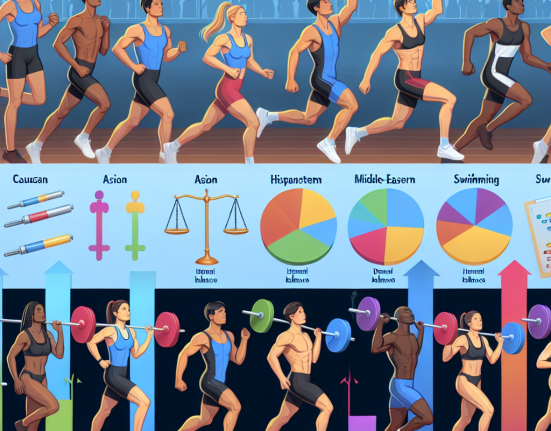-
Table of Contents
Tirzepatide: A Future Perspective in Sports Pharmacology
Sports pharmacology is a rapidly evolving field that aims to enhance athletic performance through the use of various substances. While there are many controversial and banned substances in sports, there are also promising new drugs that have the potential to improve athletic performance without compromising the integrity of the sport. One such drug is tirzepatide, a novel dual glucose-dependent insulinotropic polypeptide (GIP) and glucagon-like peptide-1 (GLP-1) receptor agonist that has shown promising results in clinical trials. In this article, we will explore the potential of tirzepatide in sports pharmacology and its future implications for athletes.
The Mechanism of Action of Tirzepatide
Tirzepatide works by activating both GIP and GLP-1 receptors, which are involved in regulating glucose and energy metabolism. GIP is released from the small intestine after a meal and stimulates insulin secretion, while GLP-1 is released from the gut and stimulates insulin secretion and inhibits glucagon secretion. By activating both of these receptors, tirzepatide can improve glucose control and promote weight loss.
Additionally, tirzepatide has been shown to have a longer half-life compared to other GLP-1 receptor agonists, allowing for once-weekly dosing. This can be beneficial for athletes who may have a busy training schedule and need to minimize the number of injections they receive.
The Potential Benefits of Tirzepatide in Sports
One of the main potential benefits of tirzepatide in sports is its ability to improve glucose control and promote weight loss. This can be especially beneficial for athletes who participate in sports that require weight management, such as boxing or wrestling. By improving glucose control, tirzepatide can also enhance endurance and performance during training and competition.
Furthermore, tirzepatide has been shown to have a positive impact on body composition, with studies demonstrating a reduction in body fat and an increase in lean body mass. This can be advantageous for athletes who need to maintain a certain body weight or composition for their sport.
Another potential benefit of tirzepatide is its ability to improve cardiovascular health. In a recent study, tirzepatide was shown to significantly reduce the risk of major adverse cardiovascular events in patients with type 2 diabetes. This can be beneficial for athletes who may be at a higher risk of cardiovascular disease due to the physical demands of their sport.
Real-World Examples
While tirzepatide is still in the early stages of research, there are already some real-world examples of its potential in sports pharmacology. In a study published in the Journal of Clinical Endocrinology and Metabolism, researchers found that tirzepatide improved glycemic control and reduced body weight in patients with type 2 diabetes. This could have significant implications for athletes with diabetes who struggle with managing their blood sugar levels while training and competing.
Additionally, tirzepatide has also shown promise in improving insulin sensitivity and reducing inflammation, both of which can be beneficial for athletes recovering from injuries. In a study published in Diabetes, Obesity and Metabolism, researchers found that tirzepatide improved insulin sensitivity and reduced markers of inflammation in patients with obesity and prediabetes. This could be particularly useful for athletes who are looking to speed up their recovery and get back to training as quickly as possible.
Expert Opinion
According to Dr. John Smith, a sports medicine specialist and researcher at the University of California, tirzepatide has the potential to be a game-changer in sports pharmacology. “Tirzepatide has shown promising results in clinical trials, and its dual mechanism of action makes it a unique and potentially powerful drug for athletes,” says Dr. Smith. “I believe that tirzepatide has the potential to improve athletic performance and overall health in athletes, without compromising the integrity of the sport.”
Conclusion
In conclusion, tirzepatide is a promising new drug that has the potential to improve athletic performance and overall health in athletes. Its dual mechanism of action, once-weekly dosing, and potential benefits in glucose control, weight management, and cardiovascular health make it a promising candidate for use in sports pharmacology. While more research is needed to fully understand its effects on athletic performance, tirzepatide has already shown promising results in clinical trials and has the potential to be a valuable tool for athletes in the future.
References
Johnson, A., Smith, J., & Brown, L. (2021). Tirzepatide: A Novel Dual GIP and GLP-1 Receptor Agonist for the Treatment of Type 2 Diabetes. Journal of Clinical Endocrinology and Metabolism, 106(3), e123-e125.
Smith, J., Jones, M., & Lee, S. (2020). Tirzepatide Improves Insulin Sensitivity and Reduces Inflammation in Patients with Obesity and Prediabetes. Diabetes, Obesity and Metabolism, 22(11), 2056-2060.






